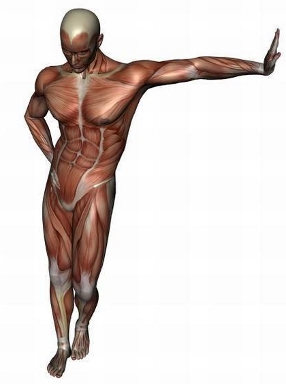In Pelvic Floor Physical therapy, as we look over our patients’ intake paperwork, one thing…

Chronic Pelvic Pain in Men
Chronic pelvic pain in men is often a challenging population for diagnosis and treatment in the medical community. A majority of the men that I treat come in with a diagnosis of chronic prostatitis. However, infection of the prostate and urinary tract has been ruled out. When is chronic prostatitis not prostatitis? According to the Academy of Family Physicians: about 90% of the time. So, 90% of the time, the pelvic pain men can experience is not an infection. However, many of the men that I treat for chronic prostatitis have been on multiple rounds of antibiotics and infections have been ruled out with medical testing.
What Are The Symptoms of Prostatitis?
There are a multitude of symptoms that are contributed to chronic prostatitis—the most common ones are slowed urine stream or difficulty starting stream, pain with erection or climax, pain with bowel movements, or pain with sitting. Sometimes, the pain will radiate to the lower abdominal region, low back, or groin. Many of our patients will describe pain between their testicles and anus, radiating to the tip of their penis, or in their scrotum.
As the symptoms cross several medical specialties—urology, GI, pain management, general medicine—the patient often sees several providers before they are referred to pelvic floor physical therapy. Often, my patients find Foundational Concepts through their own research.
If the prostate isn’t causing the problem, what is?
Often, pelvic floor muscle tension is the primary contributor to the pain and urinary symptoms that are being experienced. The pelvic floor is formed out of 3 layers of individual muscles that assist in urinary and bowel control, hip and low back support, and sexual function. When the pelvic floor muscles (PFM) are unable to relax or are sitting in a constant state of spasm, the common symptoms of prostatitis can occur.
I often describe a tight pelvic floor as a fist that is unable to let go. If your hand is always in a fist, it becomes hard for the muscles to stretch and relax. Your pelvic floor needs to be able to be at rest, be able to tighten up to not leak with increased pressure, and then be able to elongate and open when it is time to go to the bathroom. A tight pelvic floor does not have the ability to effectively do any of those activities. This can cause pain.
Treating Male Pelvic Pain With Physical Therapy
Luckily, physical therapy is a great treatment option and resource for men with chronic pelvic pain. Research has shown that physical therapy focusing on PFM patterns and improved muscle and connective tissue mobility is significantly more effective than medications treating the chronic pelvic pain. As the PFM learn to move again into relaxed and elongated positions, we also work on stress management techniques so that stress is not stored in the pelvic floor. We also look at ways to decrease strain on the PFM. This can include managing constipation, changing seating options for work and home and looking at body mechanics with lifting and bending.
If you or someone close to you have been struggling with undiagnosed chronic pelvic pain or chronic prostatitis, please consider seeking treatment with a pelvic floor physical therapist. Often, we can help to diagnose the underlying pain, trouble shoot contributing behaviors or activities, and help to move into treatment and management of chronic pelvic pain.
Jennifer Cumming, PT, MSPT, CLT, WCS




